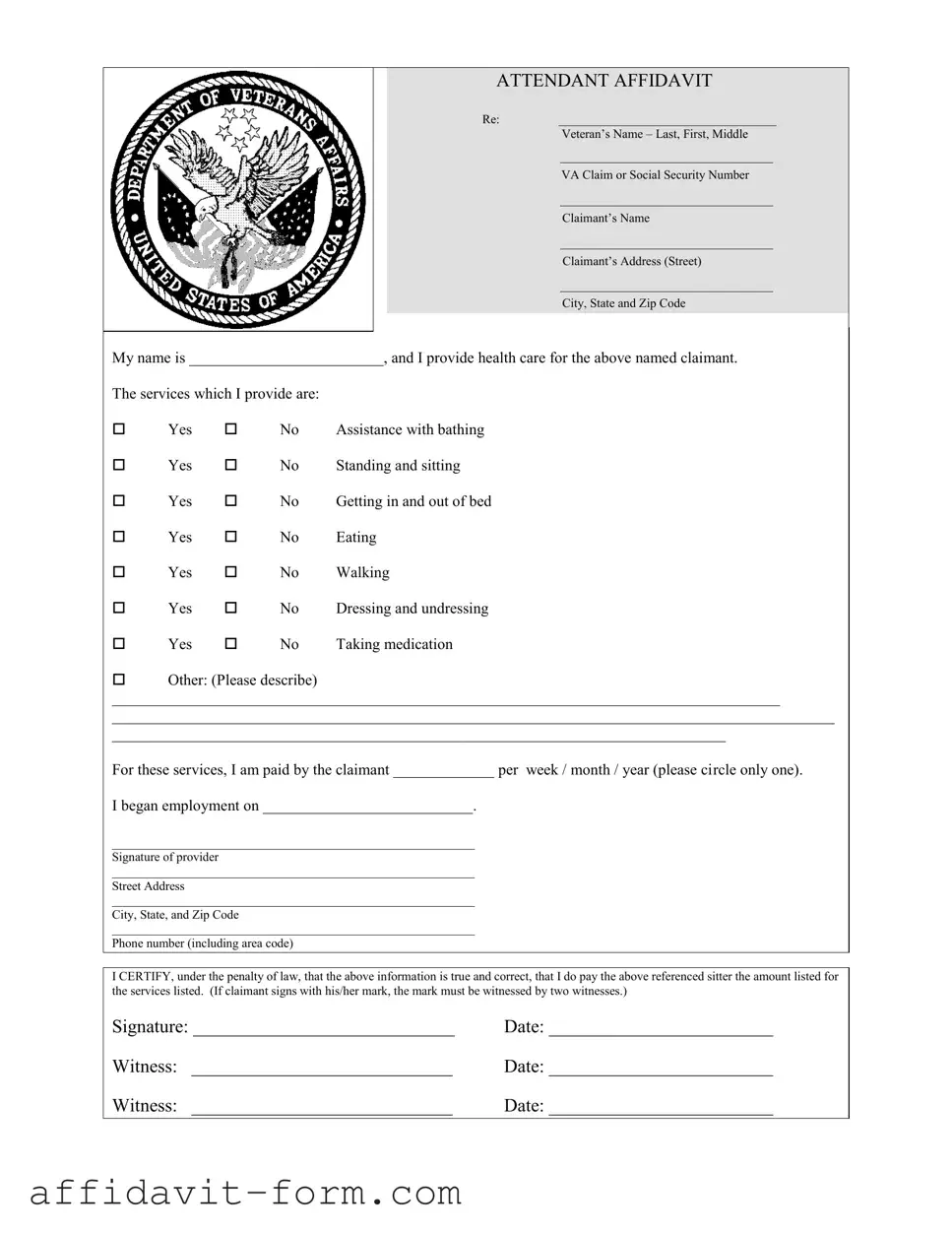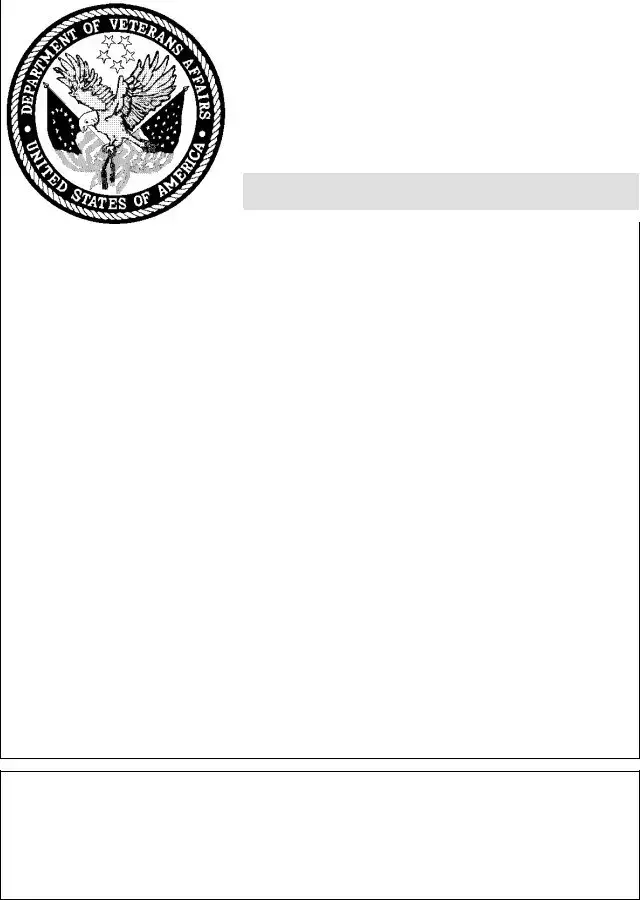|
|
|
|
|
|
ATTENDANT AFFIDAVIT |
|
|
|
|
|
|
Re: |
___________________________________ |
|
|
|
|
|
|
|
Veteran’s Name – Last, First, Middle |
|
|
|
|
|
|
|
__________________________________ |
|
|
|
|
|
|
|
|
|
|
|
|
|
|
|
VA Claim or Social Security Number |
|
|
|
|
|
|
|
__________________________________ |
|
|
|
|
|
|
|
Claimant’s Name |
|
|
|
|
|
|
|
__________________________________ |
|
|
|
|
|
|
|
Claimant’s Address (Street) |
|
|
|
|
|
|
|
__________________________________ |
|
|
|
|
|
|
|
City, State and Zip Code |
|
|
|
|
My name is _________________________, and I provide health care for the above named claimant. |
The services which I provide are: |
|
|
|
|
|
Yes |
|
No |
Assistance with bathing |
|
|
Yes |
|
No |
Standing and sitting |
|
|
Yes |
|
No |
Getting in and out of bed |
|
|
Yes |
|
No |
Eating |
|
|
Yes |
|
No |
Walking |
|
|
Yes |
|
No |
Dressing and undressing |
|
|
Yes |
|
No |
Taking medication |
|
Other: (Please describe)
______________________________________________________________________________________
_____________________________________________________________________________________________
_______________________________________________________________________________
For these services, I am paid by the claimant _____________ per week / month / year (please circle only one).
I began employment on ___________________________.
__________________________________________________________
Signature of provider
__________________________________________________________
Street Address
__________________________________________________________
City, State, and Zip Code
__________________________________________________________
Phone number (including area code)
I CERTIFY, under the penalty of law, that the above information is true and correct, that I do pay the above referenced sitter the amount listed for the services listed. (If claimant signs with his/her mark, the mark must be witnessed by two witnesses.)
Signature: ____________________________ |
Date: ________________________ |
Witness: |
____________________________ |
Date: ________________________ |
Witness: |
____________________________ |
Date: ________________________ |

